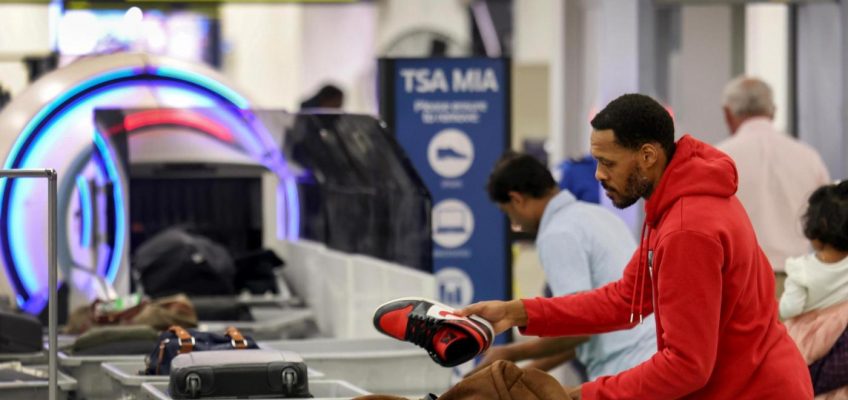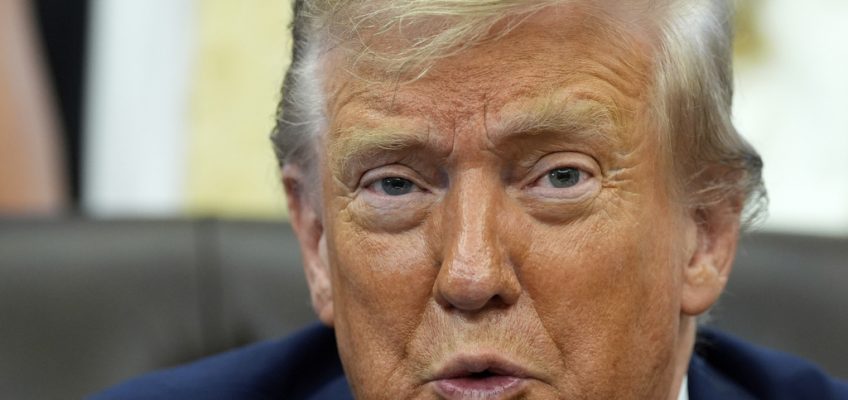By MARK SCOLFORO
MOUNT GRETNA, Pa. (AP) — It takes a 54-page pamphlet to list all the classes, concerts, outdoor recreation and other self-improvement and entertainment going on at the Pennsylvania Chautauqua in Mount Gretna this summer.
Southwest Airlines’ new policy will affect plus-size travelers. Here’s how
Travel: Plan a getaway in Colorado wine country
Travel: Stay in one of Hawaii’s most luxurious oceanfront resort villas
Steaming the fjords of Norway with a vintage camera rig and a gift for Putin
Every day can be Halloween: Why theme parks are going big on year-round horror experiences
The area springs to life every June, July and August, when a year-round population of about 1,000 more than doubles and thousands more crowd in for big events. The picturesque front porches that define the town are abuzz with energetic cottagers who punctuate their days with cooking lessons, nature walks, yoga, professorial lectures, music and plays.
In short, it’s kind of a summer camp for the sort of people who want to fit in a lecture on the Marquis de Lafayette between a bird watching walk and a bluegrass duo performance on a random July day.
“Some people don’t last, but most of the people who understand it, love it,” said Bonnie Harvey, who has lived full-time in Mount Gretna since she and her husband, Dave, sold a bed-and-breakfast inn in a nearby town. “If you’re bored, it’s your own fault.”
Retired cardiologist Dr. Joe Bering teaches himself flute on the front porch of his cottage in the Campmeeting section of Mount Gretna, Pa., Wednesday, Aug. 6, 2025. (AP Photo/Mark Scolforo)
As many quirks as people
Summertime get-togethers known as Chautauquas were practically a craze more than a century ago. A program for Christian Sunday school teachers along Lake Chautauqua in New York soon became a movement, energized by early alcohol prohibitionists, book club reading circles and a demand for scientific and literary awareness. Eventually they brought education, entertainment and a dose of religion to communities across the Northeast and Great Lakes, into Canada and beyond.
What they all had in common, said Jon Schmitz, an archivist and historian at the original Chautauqua Institution in Chautauqua, New York, was “the good use of leisure time.”
Traveling “tent” Chautauquas soon developed, and by one account the programs reached millions of people before the movement peaked in 1907 and largely died out as priorities changed during the Great Depression.
Although the great majority of the Chautauquas are long gone, Mount Gretna got a second wind in the 1970s with the establishment of a successful art show and a highly regarded chamber music and jazz concert series. Now listed on the National Register of Historic Places, it’s been thriving ever since.
Local historian Sue Hostetter opens the door to the rarely used jail cell with wooden bars on the second floor of the Hall of Philosophy, Wednesday, Aug. 6, 2025, in Mount Gretna, Pa. (AP Photo/Mark Scolforo)
These days, Mount Gretna can seem to have as many quirks as it does people. Described as “Culture Gulch” by a newspaper decades ago, the mountainous, wooded terrain about 84 miles west of Philadelphia includes some 200 privately owned cottages, most of them maintained to look just as they did in the early 1900s. But it isn’t some private club — while some of the cottages are kept within families for generations, others are bought and sold, and a small percentage are available for rent under restrictive local regulations.
“When most people call and say, ‘I’m interested in buying a house,’ one of the first things I say is, ‘How patient are you?’ Sometimes it can take a week, sometimes it can take years to find the right one,” said real estate agent Michelle Shay, who lives in Mount Gretna. “Some of them are 100-year-old cottages built on tree stumps. You have to be really aware of what you’re buying.”
Cottages in the town of Mount Gretna, Pa., shown Wednesday, Aug. 6, 2025, spring to life every summer with people who spend their leisure time in activities such as cooking lessons, nature walks, yoga, professorial lectures, music and plays. (AP Photo/Mark Scolforo)
Committed to lifelong learning
The imposing 1909 Hall of Philosophy building is where many of the lectures and classes are held — and where Mount Gretna’s old jail is on the second floor, with wooden bars. Cottages carry quaint names such as Lazy Dog, As You Like It, Uneeda Rest, the Vicarage and Whole New World. Benches are scattered about, inviting conversations. There’s no mail delivery in some parts of town, so the post office serves double duty as a sort of community hub. The ice cream shop, in operation since the 1890s, does brisk business all summer.
“The community is really great, there’s always something going on,” said Reed Fretz, a college student who grew up in Mount Gretna and was renting out canoes on its Lake Conewago. “What you want out of it, you can get out of it.”
Lifeguard Luke Macchione watches over swimmers and boaters Wednesday, Aug. 6, 2025, on Lake Conewago in Mount Gretna, Pa., a town that springs to life every summer, when its picturesque front porches become filled with energetic cottagers. (AP Photo/Mark Scolforo)
The feel of a summer retreat is fostered by restrictions about operating lawn mowers and other power equipment, and strict regulations about tree trimming. But with cottages cheek-by-jowl, getting away from it all doesn’t necessarily mean getting away from each other. Parking can be a challenge and privacy elusive. Volunteerism is rampant.
There’s a “concentration of pure talent” in Mount Gretna, said John Weaver, president of the Pennsylvania Chautauqua Foundation. “You have a group of really, really smart people that are committed to lifelong learning that all sort of hang out at the same place.”
Just a few of this summer’s events: a Rachel Carson re-enactor during Nature Week. Playwrights discussing their work. Dancers giving flamenco lessons. The annual art show that’s so popular, out-of-towners ride shuttle buses in from a field miles away. And for two hours toward the end of August, International Make Music on Your Porch Day.
Steeped in American history
Mount Gretna was founded along a rail line constructed in the 1880s by Robert Coleman, the great-grandson of an Irish immigrant who supplied munitions to the Continental Army during the American Revolution and became an iron magnate, known as Pennsylvania’s first millionaire.
Cottages in the town of Mount Gretna, Pa., shown Wednesday, Aug. 6, 2025, spring to life every summer with people who spend their leisure time engaged in activities such as cooking lessons, nature walks, yoga, professorial lectures, music and plays. (AP Photo/Mark Scolforo)
Coleman directed construction of a picnic grounds along his new rail line and doled out parcels. One went to a group inspired by the “mother” Chautauqua in New York. By 1892, lots were laid out and work began on the Pennsylvania Chautauqua’s public buildings and cottages.
It was an immediate hit, according to Jack Bitner’s comprehensive 2012 history of Mount Gretna. Classes held during the inaugural season included Bible studies, botany, zoology and music. A Department of Pedagogy organized lectures on history, art, languages, literature, psychology and math.
About 8,800 people attended. They’d be right at home in Mount Gretna today.




